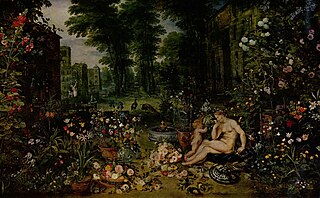
Kenjutsu (剣術) is the umbrella term for all (koryū) schools of the Japanese swordsmanship, in particular those that predate the Meiji Restoration. The modern styles of kendo and iaido that were established in the 20th century included modern form of kenjutsu in their curriculum, too. Kenjutsu, which originated with the samurai class of feudal Japan, means "the method, technique or the art of the sword." This is opposed to kendo, which means "the way of the sword" and uses bamboo swords (shinai) and protective armour (bōgu).

The Kansai region or the Kinki region lies in the southern-central region of Japan's main island Honshū. The region includes the prefectures of Mie, Nara, Wakayama, Kyoto, Osaka, Hyōgo and Shiga, sometimes Fukui, Tokushima and Tottori. While the use of the terms "Kansai" and "Kinki" have changed over history, in most modern contexts the use of the two terms is interchangeable. The urban region of Osaka, Kobe, and Kyoto is the second-most populated in Japan after the Greater Tokyo Area.

Hyōgo Prefecture is a prefecture of Japan located in the Kansai region on Honshu island. The capital of Hyogo is Kobe.

Provinces of Japan were administrative divisions before the modern prefecture system was established, when the islands of Japan were divided into tens of kuni, usually known in English as provinces. Each province was divided into gun.

Nihonmatsu is a city in Fukushima Prefecture, Japan. As of 1 March 2018, the city has an estimated population of 55,484 in 18,898 households, and a population density of 160 persons per km². The total area of the city was 344.42 square kilometres (132.98 sq mi). The Adachi neighborhood of Nihonmatsu was the birthplace of artist Chieko Takamura, subject of the book of poems Chieko's Sky, written by her husband Kōtarō Takamura.

Amagasaki is an industrial city located in Hyōgo Prefecture, Japan. The city was founded on April 1, 1916. Its population is around 460,000, below its peak of over 554,000 in 1971.

Nishinomiya is a city located in Hyōgo Prefecture, Japan, between the cities of Amagasaki and Ashiya. On April 1, 2005, the city of Nishinomiya celebrated its 80th anniversary. It is best known as the home of Kōshien Stadium, where the Hanshin Tigers baseball team plays home games and where Japan's annual high school baseball championship is held. It is also the location of Kwansei Gakuin University, a private university founded by American missionaries in the nineteenth century. Nishinomiya is an important commercial and shipping city in the Kansai region with the third largest population in Hyōgo Prefecture.

Akō is a city located in southwestern Hyōgo Prefecture, Japan.

Takarazuka is a city located in Hyōgo Prefecture, Japan. As of October 1, 2016, the city has an estimated population of 225,228 and a population density of 2,200 persons per km2. The total area is 101.89 km2.

Settsu Province was a province of Japan, which today comprises the southeastern part of Hyōgo Prefecture and the northern part of Osaka Prefecture. It was also referred to as Tsu Province or Sesshū (摂州).

Agano is a city located in Niigata Prefecture, Japan. As of 1 June 2016, the city had an estimated population of 42,651 in 14,417 households, and a population density of 223 persons per km². ItsThe total area of the city was 192.74 square kilometres (74.42 sq mi).

Gōshō-ji is a Jōdo Shinshū Buddhist temple in Takarazuka, Hyōgo Prefecture, Japan. The other name of this temple is Kohama-gobō (小浜御坊). Kohama is the name of the area around the temple and along the Arima Kaidō, which connected Osaka and Kyoto to Arima Onsen during the Edo period.

The Mukogawa River or Muko River is a river in the south-eastern part of Hyōgo Prefecture. This river was selected as the second most important river in the region by the prefecture governor. Its total length is 66 kilometers, and the drainage area is 496 square kilometers.
The Amagasaki Domain was a feudal domain of Japan during the Edo period. It had its administrative headquarters at Amagasaki Castle. The domain extended over parts of Settsu Province that correspond to portions of the cities of Amagasaki, Nishinomiya, Ashiya, Kobe, Itami, and Takarazuka, in modern-day Hyōgo Prefecture.

Nada-Gogō are five area-based groupings of sake breweries in the cities of Kobe and Nishinomiya, Hyōgo Prefecture, Japan. It is the largest sake producing region in Japan, with breweries in the area accounting for just over one quarter of the sake production in the entire country.

Mukogawa Station is a train station in Hyōgo Prefecture, Japan, operated by Hanshin Electric Railway Co., Ltd.

Soga Shōhaku (曾我蕭白) (1730–1781) was a Japanese painter of the Edo period. Shōhaku distinguished himself from his contemporaries by preferring the brush style of the Muromachi period, an aesthetic that was already passé 150 years before his birth.






















